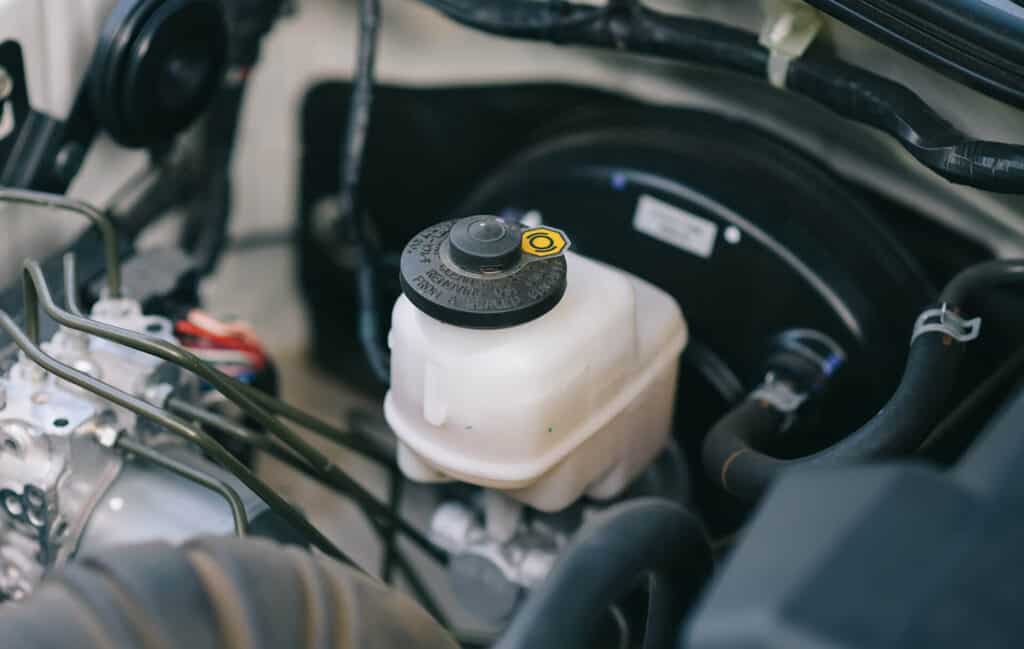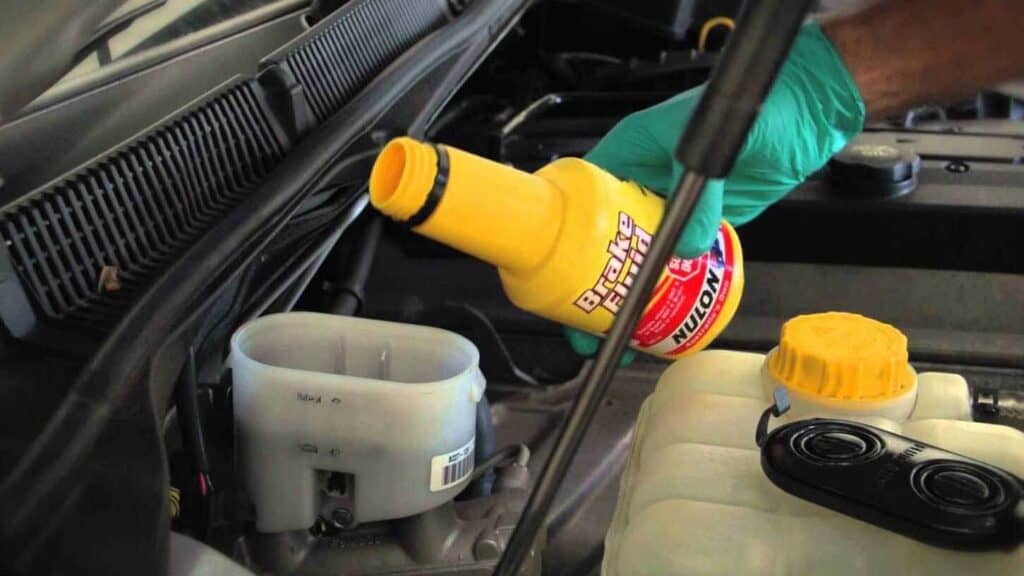Understanding the Role of Brake Fluid in Vehicle Safety
Brake fluid plays a critical role in ensuring your vehicle’s braking system functions efficiently and safely. The fluid helps transfer the pressure from the brake pedal to the brake calipers, allowing the brake pads to clamp down on the rotors and bring your vehicle to a stop. In this article, we’ll explore five key indications that your brake fluid may need refreshing and discuss the importance of regular brake fluid checks in maintaining a safe driving experience.
The Purpose of Brake Fluid: How It Impacts Your Braking System
Brake fluid is a hydraulic fluid that transfers the force applied to the brake pedal to the calipers, allowing them to squeeze the brake pads against the rotors. It also acts as a lubricant for the braking system’s moving parts and helps prevent corrosion. Over time, brake fluid can deteriorate and become contaminated, which can negatively impact braking performance and potentially compromise your vehicle’s safety.

Indication #1: Discolored or Cloudy Brake Fluid
One of the first signs that your brake fluid needs refreshing is discoloration or cloudiness. Fresh brake fluid is usually clear or amber-colored, while old or contaminated fluid may appear dark brown or black. If you notice that your brake fluid has become discolored or cloudy, it’s time for a flush.
Indication #2: Soft or Spongy Brake Pedal Feel
A soft or spongy brake pedal can indicate that your brake fluid has become contaminated with air or moisture, which reduces its effectiveness in transmitting pressure. If you experience this issue, it’s essential to have your brake fluid inspected and potentially flushed to restore proper braking performance.
Indication #3: Unusual Noises When Braking
If you hear strange noises like squeaking, grinding, or groaning when you apply the brakes, it could be a sign that your brake fluid is no longer providing adequate lubrication to the braking system’s components. In this case, a brake fluid flush may help eliminate these noises and improve your vehicle’s braking performance.
Indication #4: Longer Stopping Distances or Reduced Braking Performance
If you notice that your vehicle’s stopping distances have increased or that your brakes don’t seem to be working as effectively as they once did, it could be a sign that your brake fluid has become contaminated or has lost its effectiveness. In this situation, refreshing your brake fluid can help restore optimal braking performance.
Indication #5: Warning Lights on Your Dashboard
If your vehicle’s brake warning light illuminates on the dashboard, it could be a sign of a problem with your brake fluid or another component in the braking system. Don’t ignore this warning light; have your vehicle inspected by a professional to determine the cause and address any issues promptly.
How to Inspect Your Brake Fluid: A Step-by-Step Guide
Regularly checking your brake fluid can help you identify potential issues before they become more significant problems. To inspect your brake fluid, follow these simple steps:
1. Locate the brake fluid reservoir in your vehicle’s engine bay, typically near the master cylinder.
2. Clean the area around the reservoir to prevent dirt and debris from contaminating the fluid.
3. Remove the cap and visually inspect the fluid’s color and clarity. If it’s dark, cloudy, or has debris in it, it’s time for a flush.
4. Check the fluid level to ensure it’s within the recommended range. If it’s low, top it off with the appropriate type of brake fluid.
Brake Fluid Flush: When, Why, and How to Perform One
A brake fluid flush involves removing old, contaminated fluid from your braking system and replacing it with fresh, clean fluid. It’s essential to perform a brake fluid flush periodically to maintain your vehicle’s braking performance and ensure your safety on the road. The frequency of brake fluid flushes may vary depending on the type of brake fluid used and the specific recommendations of your vehicle’s manufacturer, but a general guideline is to flush the brake fluid every two years or 30,000 kilometers, whichever comes first.
To perform a brake fluid flush, follow these steps:
1. Gather the necessary tools and materials, including a brake fluid catch container, a brake bleeder wrench, a clear hose, and the appropriate brake fluid for your vehicle.
2. Ensure your vehicle is parked on a level surface, and the engine is off and cool.
3. Locate the brake fluid reservoir and remove the cap. Place a catch container beneath the bleeder valve of the brake caliper that is farthest from the master cylinder (typically the rear passenger-side wheel).
4. Attach the clear hose to the bleeder valve and insert the other end into the catch container.
5. Have an assistant pump the brake pedal a few times and then hold it down. Open the bleeder valve with the wrench, allowing the fluid to flow into the catch container. Close the valve before the assistant releases the brake pedal.
6. Repeat this process for each brake caliper, working from the farthest to the closest to the master cylinder.
7. Continuously monitor the brake fluid reservoir during the flush, ensuring it does not run dry, and keep it topped up with fresh brake fluid.
8. Once the flush is complete, ensure the brake fluid level is within the recommended range and the brake pedal feels firm. Replace the reservoir cap and dispose of the used brake fluid responsibly.

Conclusion: Keep Your Braking System in Optimal Condition with Regular Brake Fluid Checks
Regular brake fluid checks and flushes are crucial to maintaining your vehicle’s braking performance and ensuring a safe driving experience. By paying attention to the warning signs and performing routine brake fluid inspections, you can help prevent potential issues and keep your braking system in top condition. Don’t neglect this essential aspect of vehicle maintenance – make it a priority for a safer and smoother drive.
